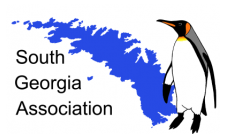BirdLife International Marine Programme: International Women’s Day 2021
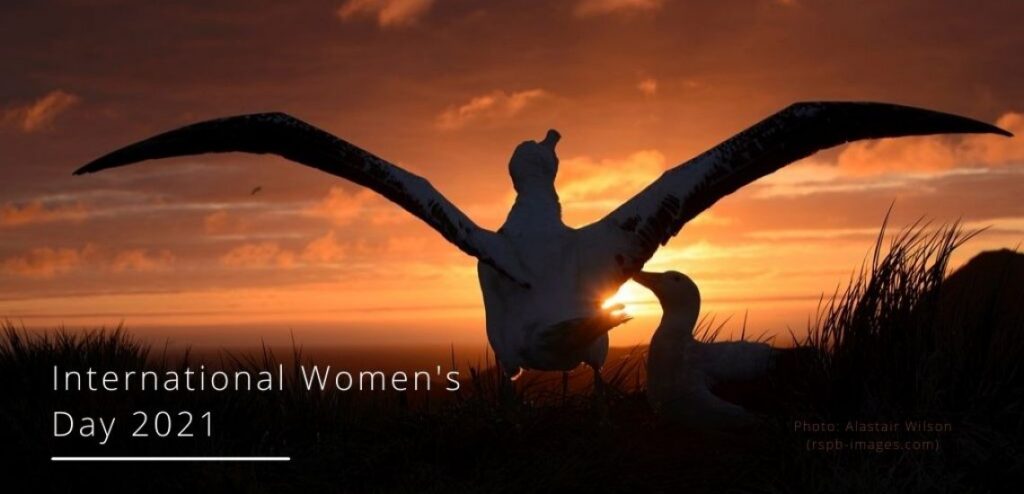
Monday 8th March we're celebrating International Women's Day. #AlbatrossStories is a platform to share the lives of albatrosses across the world, the challenges they face, the journeys they go on, the incredible lengths these #SuperMums will go to. But on this day, we're celebrating the incredible work of the Albatross Task Force women, whose dedication helps give our wonderful albatrosses a fighting chance. We recently caught up with some of them to find out more about what they do.
By Samuel Wrobel
Header image: © Alastair Wilson (rspb-images.com)
Samantha Matjila, Marine Coordinator, Namibia Nature Foundation
What does your role involve?
My role facilitates the Albatross Task Force (ATF) Project funded by the RSPB, as well as the Namibian Islands Marine Protected Area (NIMPA) project, which is funded by the Blue Marine Foundation. Under the ATF project, I am responsible for advocating the sustainability of seabird bycatch data collection in the Namibia for demersal hake longline and trawl fishery. Under the NIMPA project I am responsible for initiating and developing a collaborative Management Plan for the Namibian Islands Marine Protected Area and mobilizing resources towards its implementation by providing support to the Ministry for Fisheries and Marine Resources (MFMR).
How did you get involved with this work?
During my MSc studies in South Africa, I worked with small-scale fishermen targeting snoek (Thyrsites atun), assessing the handling and microbial load of this species. This exposure allowed me the opportunity to expand into commercial fisheries in Namibia. It is with this that I applied for the ATF Instructor vacancy in 2016.
What do you like best about it?
I love how my work is contributing towards creating awareness amongst fishermen and coastal communities regarding the importance of Namibia’s marine resources and why we should conserve them. Employment opportunities for a local women’s group were also created through the ATF project, who are now responsible for the building and selling of “tori lines” (seabird bycatch mitigation measures). In addition, I hope to achieve an improved/healthy marine ecosystem through making small but significant changes by creating a beneficial balance between humans and the marine wildlife.
What has been one of your proudest achievements to date?
Having contributed to the success of reducing seabird bycatch in the Namibian demersal longline fishery by 98%, alongside being the only woman in the ATF team! You can read more about that in our blog, here.
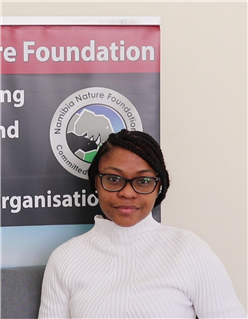
Andrea Angel, Manager of the South Africa Albatross Task Force programme
What does your role involve?
Engaging with industry and government to increase the uptake of seabird bycatch mitigation measures across fishing fleets, and advocate for improved compliance and legislation with these measures. Working with conservation organisations and institutions with the aim of driving an ecosystems approach to fisheries management through fishers training, supporting market incentive initiatives and awareness raising.
How did you get involved with this work?
After spending three years on various seabird islands, conducting research and witnessing first-hand the effects of various threats to albatross and petrel species, I took every opportunity I could to work towards preventing further declines and improve their conservation status.
Why is it important to you?
Being out in the field is the most satisfying part of my work, and when you feel that what you do is tangible and really matters. Working to conserve and protect our biodiversity is to me one of the most important things I can dedicate my life to, not only because our own survival depends on it but because without it, the world my son and children like him will inherit would be but a shadow of the amazing place it can be.
What has been one of your proudest achievements to date?
There is no one achievement for me that stands out but rather the many small ones that add up to the bigger picture, for instance getting a new piece of regulation through or the development and uptake of mitigation devices by a new fleet. For me it is through the many years of teamwork that we have achieved recognition and respect from industry. Because while I may be the face today it has taken 15 years of dedicated work by many others, including women for the ATF in South Africa to be at the forefront of seabird conservation and the only programme that is addressing seabird bycatch issues in our waters.
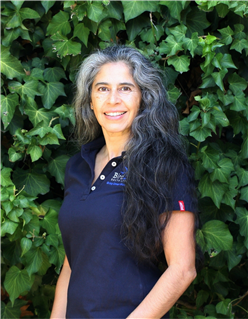
Mame Betty Lette Diouf, West Africa Bycatch Project Officer
What does your role involve?
My role is largely to support activities for effective delivery of the bycatch project in the PRCM region through accurate collection and analysis of by catch data, preparations of resource materials and capacity building of local civil society organisations in the sub region.
How did you get involved with this work?
I joined BirdLife International in June 2018 as Assistant to the West Africa Marine Program which is made up of four projects (Bycatch, coastal seabirds, Cabo Verde seabirds and oil and Gas) In January 2020, I was promoted to the position of Bycatch Project Officer. To this end, I work closely with the Program Manager and the instructors on both the technical and administrative aspects of the project.
What do you like best about it?
The seabird and sea turtle bycatch mitigation project are very fascinating work. The integration of the Bycatch project has allowed me to further immerse ourselves in the conservation community. Indeed, in the past, our field of intervention in the management of natural resources has been limited to the fishing sector. With this work, the opportunity is given to us as a Geographer-Environmentalist to broaden our scope of action in the management of marine and coastal ecosystems.
What has been one of your proudest achievements to date?
The arrival of the Covid 19 pandemic in Senegal has not greatly facilitated the activities of the project, especially those in the field, since I joined the project. However, in December 2018 while I was still assistant of the West Africa marine program, I coordinated an important capacity building activity for the national partners of the project. This was a regional training workshop for observers from the 7 countries of the CSRP area on mitigation bycatch of birds and sea turtles in collaboration with NOAA. It was a hands-on capacity building workshop for observers on board ships. The workshop was held for 8 days in Dakar.
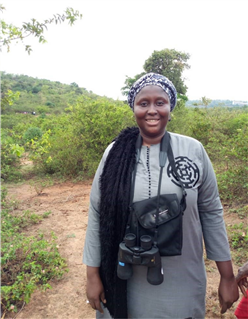
Pamela Braham, Finance and Reporting Manager RSPB
What does your role involve?
I work in the Project Development and Support Unit headed up by Nick Folkard and I manage 3 brilliant ladies, Wendy, Julie and Debbie, in the financial management arm of that team. I am responsible for the financial reporting and monitoring of high value grant funded projects, ensuring grant compliance, liaising with our Project Partners and Project Managers as well as providing advice on day-to-day finance issues and budgeting. I provide support to the BirdLife International Marine Programme (BIMP) team and the Greater Gola Landscape team.
How did you get involved with this work?
My degree was in European Business Studies, including living in France for year, which was followed by me working in different finance roles. I’ve always had a passion for the environment and an interest in different cultures, so when I was lucky enough to be offered a job at the RSPB about 16 years ago as an Admin & Comms Assistant in the then International Directorate, it was a dream come true. After that role, I became a PA and then had the opportunity to move into a finance role within International, which has evolved into the job I have today.
What do you like best about it?
I love helping colleagues and working with our International partners. I like to learn new things and problem solve urgent curve balls when working with our International partners to ensure work can continue on the ground. Overcoming challenges is very satisfying, even if stressful at the time!
What has been one of your proudest achievements to date?
I have been working with the incredible BIMP team for 8 years, supporting them on finances. Even though I’m mostly sat in front of spreadsheets, contracts and receipts, which doesn’t sound very glamorous, being a cog in a large international network of inspiring conservationists and helping to support the Albatross Task Force to achieve important work in protecting the beautiful Albatross makes me feel that I am making a difference to the planet.
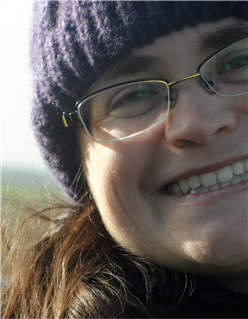
Yasuko Suzuki, Marine Programme Officer, based in Tokyo, Japan
What does your role involve?
Through my work, I engage with the fishing industry, seafood supply chain, governmental agencies, researchers, and the public in Japan to reduce seabird bycatch on the high seas and in Japanese waters.
How did you get involved with this work?
I was previously involved in a research project on conflicts between fisheries and coastal seabird in the US for years. My desire to contribute to seabird conservation at a global scale kept becoming stronger and decided to join the team at BirdLife International.
What do you like best about it?
I get to work with many people from different backgrounds to tackle seabird bycatch issue. It is often challenging, but very rewarding when we find common ground and start working together to protect seabirds. Human activities like fisheries are sadly posing negative impacts on seabird populations globally. But I believe we can make positive changes and turn the tide through working together with many. I am happy to be part of the team to drive the change.
What has been one of your proudest achievements to date?
Since joining BirdLife International less than 3 years ago, our network with the industry, other NGOs, and government officials in Japan has expanded quite rapidly. Building a good network is really important for our work, and I am proud to be a catalyst behind it.
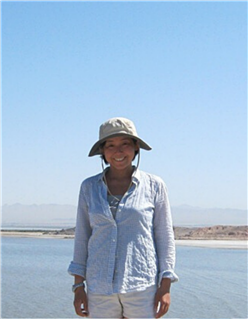
Stephanie Prince, High Seas Programme Manager, RSPB, UK
What does your role involve?
I coordinate BirdLife’s seabird bycatch work on the High Seas (i.e., areas outside of countries national jurisdictions). I manage a team working to influence positive change for seabirds across the worlds tuna fisheries, and conduct policy and advocacy work, communications and manage projects in a number of countries.
How did you get involved with this work?
I spent a few years working on South Georgia, a sub-Antarctic island monitoring albatross populations. I fell in love with the birds and saw first-hand the impact of fisheries on the lives of albatrosses. Since then, I’ve been on a mission to do something to help the birds, that I spent so much time living amongst.
What do you like best about it?
I like going to work every day knowing that I am working with my colleagues to prevent some very special species’ going extinct. It gives me purpose and seeing the huge conservation successes a small group of people are having in saving seabirds on a global level constantly inspires me.
What has been one of your proudest achievements to date?
I’m just proud to be part of a team that has worked hard to save birds and has demonstrated that by working with the fishing industry, governments and scientists we can make sustainable improvements for seabirds.

Ana Carneiro, Seabird Ecologist, BirdLife International
What does your role involve?
My main role centres on using seabird tracking data to identify priority sites for conservation at national, regional and global levels, and to help addressing seabird bycatch. Currently, I am working in a project that uses novel bird-borne radars to detect when wandering albatrosses from Bird Island, South Georgia, interact with fishing vessels. This will help us understanding the impact of legal and IUU fishing activities on wandering albatrosses, and greatly improve the identification of areas and periods of highest susceptibility of this species to bycatch.
How did you get involved with this work?
I always wanted to work with marine conservation, and seabirds play a key role in oceanic ecosystems. They are amazing creatures, with some of the most extreme and fascinating life-histories. Take the Grey-headed Albatross, for example, that spends up to 16 months at sea between breeding seasons and often circumnavigate the Antarctic continent, covering up to 240,000 km. Seabirds are one of the most threatened groups of vertebrates in the world. Invasive species at their colonies, bycatch while at sea and climate change are the top three threats. The work led by BirdLife International Marine Programme to address these declines has always been inspirational and I am really happy to be part of it.
What do you like best about it?
We know that many seabirds are facing multiple threats both on land and at sea. We also know that for many threats solutions already exist to turn things around. Simple and inexpensive mitigation measures are highly effective in preventing seabird bycatch in trawl and longline fisheries. The population of Wandering Albatrosses breeding at South Georgia, for example, has declined rapidly since the 1960s. Yet since 2014, bycatch of seabirds in the local South Georgia longline fishery has dropped to negligible levels because of regulations introduced under the Convention on the Conservation of Antarctic Marine Living Resources (CCAMLR). This has been achieved through the implementation of a combination of measures including seasonal closures, heavier line-weighting and night setting, and the deployment of bird-scaring lines. I hope that my work can contribute to make all of the waters used by these ocean wanderers as safe as those around South Georgia.
What has been one of your proudest achievements to date?
In collaboration with many scientists around the Atlantic, I was co-leading the work that BirdLife did in the identification of a site in the high seas of the North-East Atlantic to be designated as a Marine Protected Area by the OSPAR commission. If accepted, this site will offer protection for at least 21 seabird species, including 2.9 to 5 million birds travelling from 56 colonies within 16 countries.
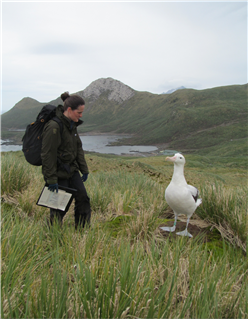
Hana Saito, Intern with BirdLife International Marine Programme, based in Tokyo, Japan
What does your role involve?
I am assisting with Albatross Stories, a multinational social media campaign, which tells our audience in Japan about albatrosses and bycatch problem they are facing.
How did you get involved with this work?
I belong to a student organization having a connection with BirdLife International and learned about the albatross conservation project we are working on. I didn’t have enough knowledge about birds before, but I was fascinated by albatrosses and interested in the threats they are exposed to. My desire to contribute to reducing the impacts of the problems on seabirds motivated me to join this team as an intern.
What do you like best about it?
I am delighted that the photos and data of albatrosses we share on social media help the audience in Japan to become fascinated by the cuteness of South Georgia’s albatrosses and become more aware of the issues they are facing. It’s rewarding to broaden our outreach with the public in Japan by incorporating diverse tactics in the social media campaign.
What has been one of your proudest achievements to date?
Since the launch of Albatross Stories, our outreach has been steadily expanding in Japan. We have been able to engage with our audience by offering a variety of content and fun events they can participate in. I will continue to seek ways to expand this network.
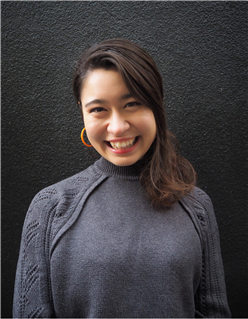
Make sure to follow #AlbatrossStories on Facebook, Twitter and Instagram and send us your own stories of what our albatross stars are all getting up to down on Bird Island.
If you want to support the work of the Albatross Task Force you can become a friend of the albatross, helping projects such as educating fishers on the importance of bird scaring lines which deter Sitka and many other albatrosses from the dangers of fish hooks.
We would not be able to do this important work without the support of kind funders including; the David and Lucile Packard Foundation, Darwin Initiative, South Georgia Heritage Trust, Friends of South Georgia Island and the South Georgia Association.
